Abstract
To establish the role of the biliary epithelium in bile formation, we studied several aspects of biliary physiology in control rats and in rats with ductular cell hyperplasia induced by a 14-d extrahepatic biliary obstruction. Under steady-state conditions, spontaneous bile flow was far greater in obstructed rats (266.6 +/- 51.9 microliters/min per kg) than in controls (85.6 +/- 10.6 microliters/min per kg), while excretion of 3-hydroxy bile acids was the same in the two groups. Infusion of 10 clinical units (CU)/kg per h secretin produced a minimal choleretic effect in controls (+3.8 +/- 1.9 microliters/min per kg) but a massive increase in bile flow in the obstructed animals (+127.8 +/- 34.9 microliters/min per kg). Secretin choleresis was associated with an increase in bicarbonate biliary concentration and with a decline in [14C]mannitol bile-to-plasma ratio, although solute biliary clearance significantly increased. Conversely, administration of taurocholate (5 mumol/min per kg) produced the same biliary effects in control rats and in rats with proliferated biliary ductules. In the obstructed animals, the biliary tree volume measured during taurocholate choleresis (67.4 +/- 15.8 microliters/g liver) was significantly greater than that determined during the increase in bile flow induced by secretin (39.5 +/- 10.4 microliters/g liver). These studies indicate that, in the rat, the proliferated bile ductules/ducts spontaneously secrete bile and are the site of secretin choleresis. Furthermore, because the proliferated cells expressed phenotypic traits of bile ductular cells, our results suggest that whereas under normal conditions the biliary ductules/ducts in the rat seem to contribute little to bile formation, secretion of water and electrolytes is a property of biliary epithelial cells.
Full text
PDF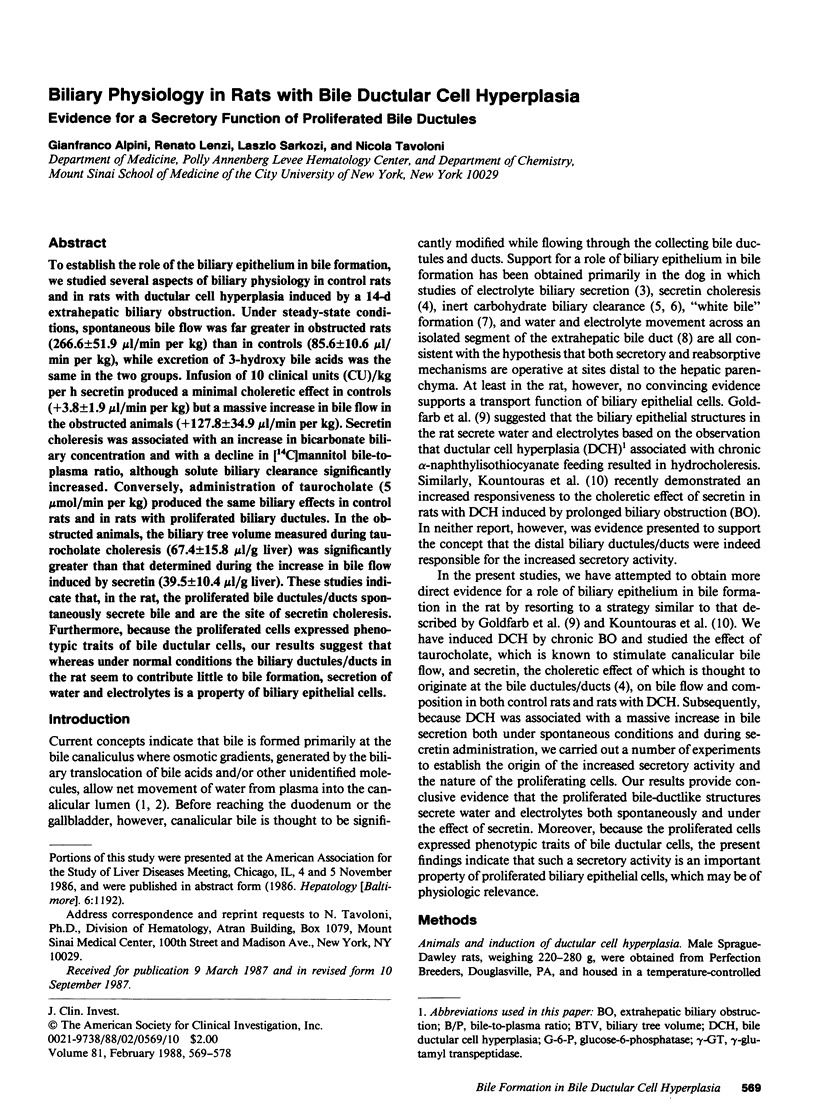
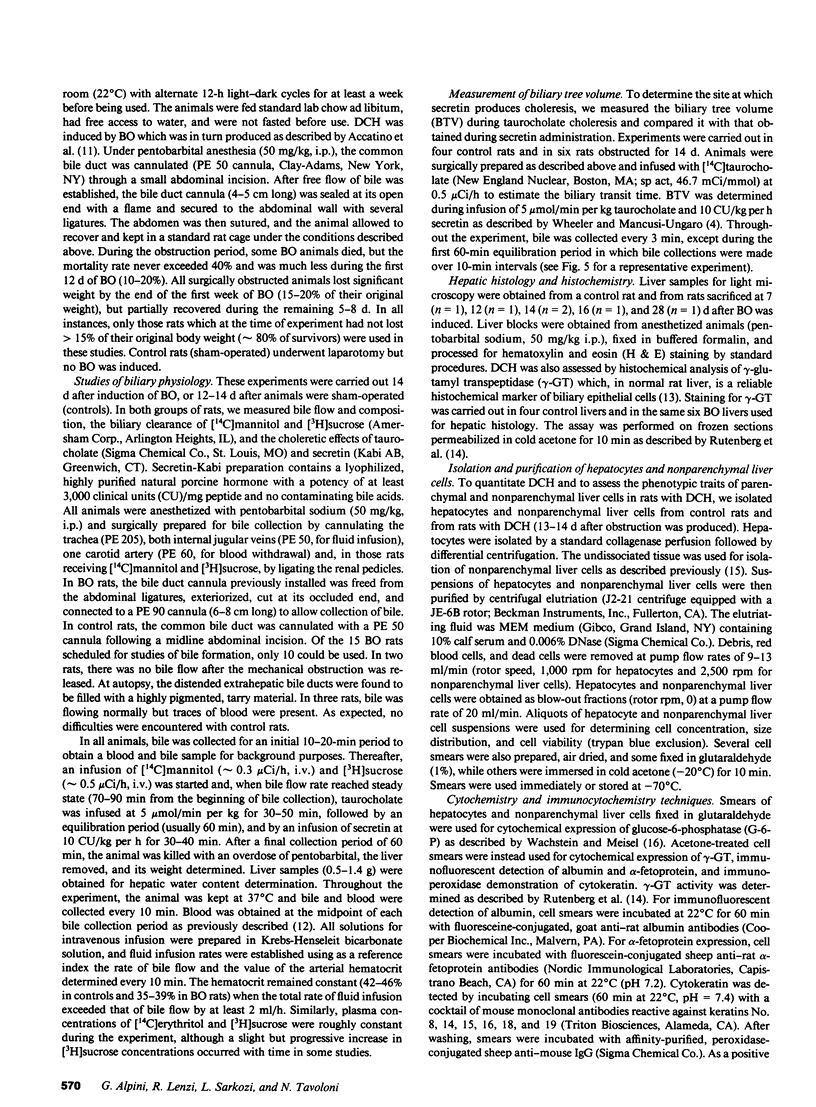
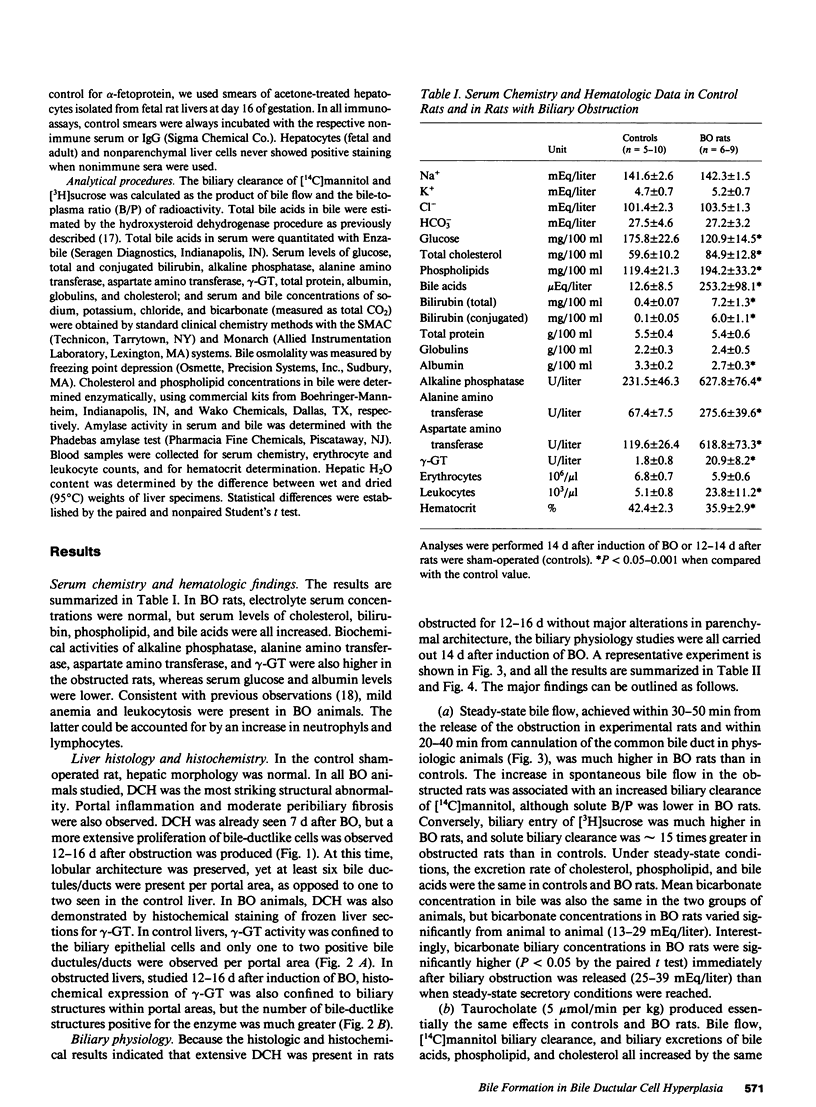
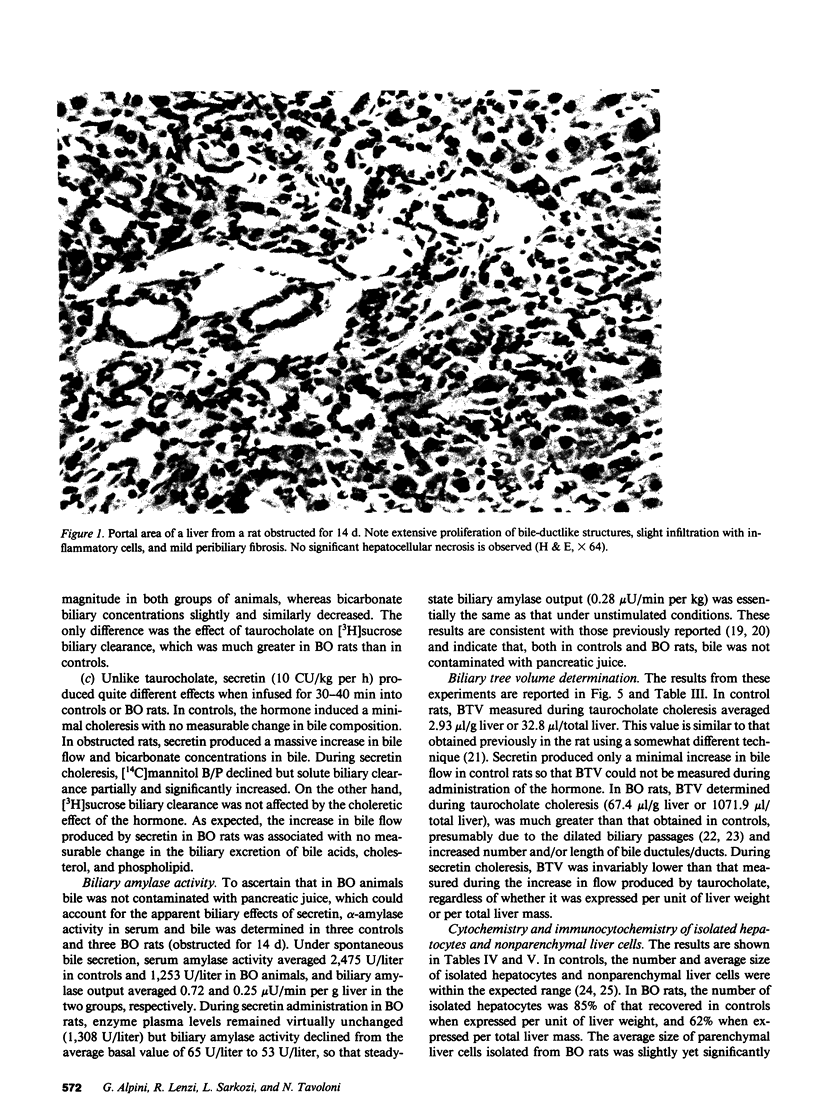
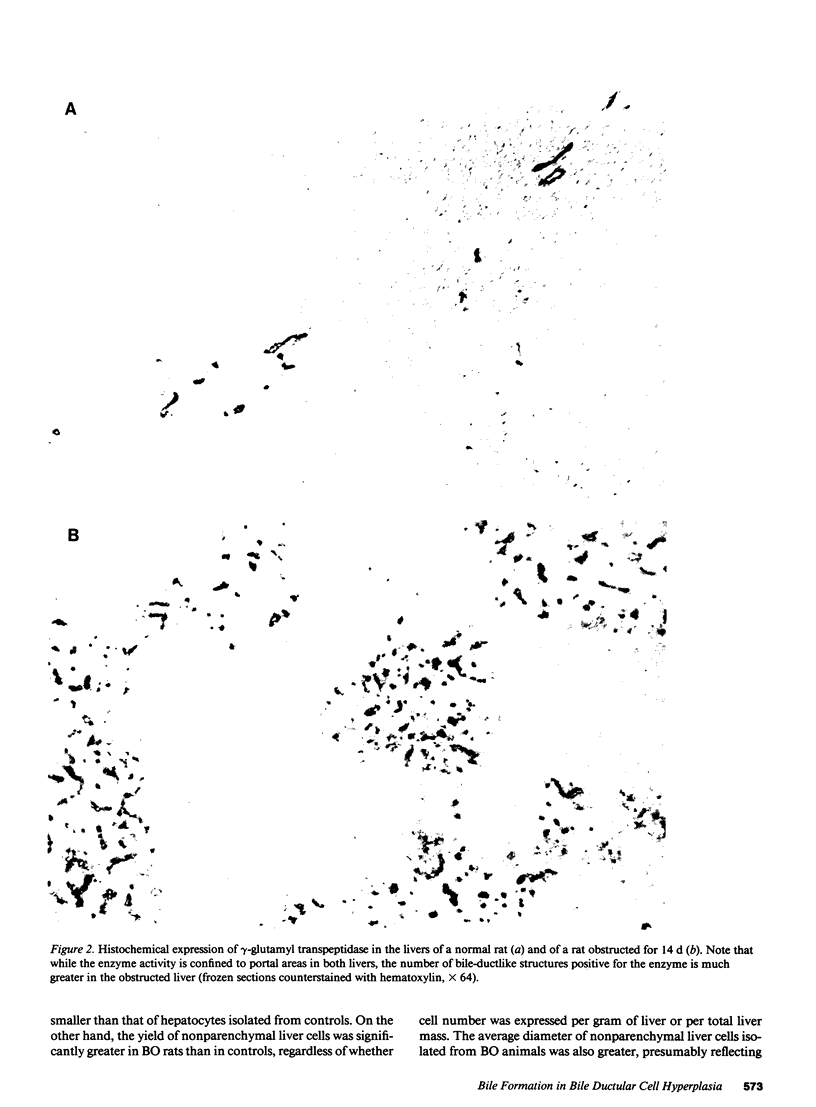
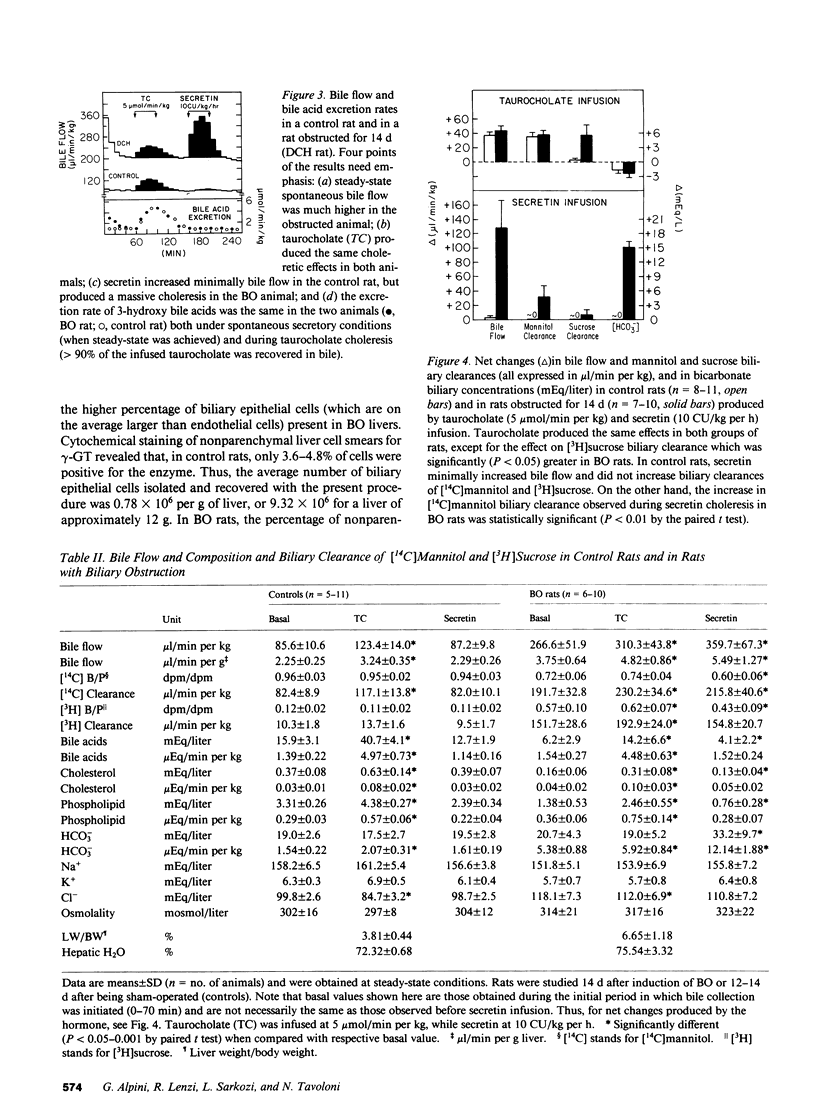

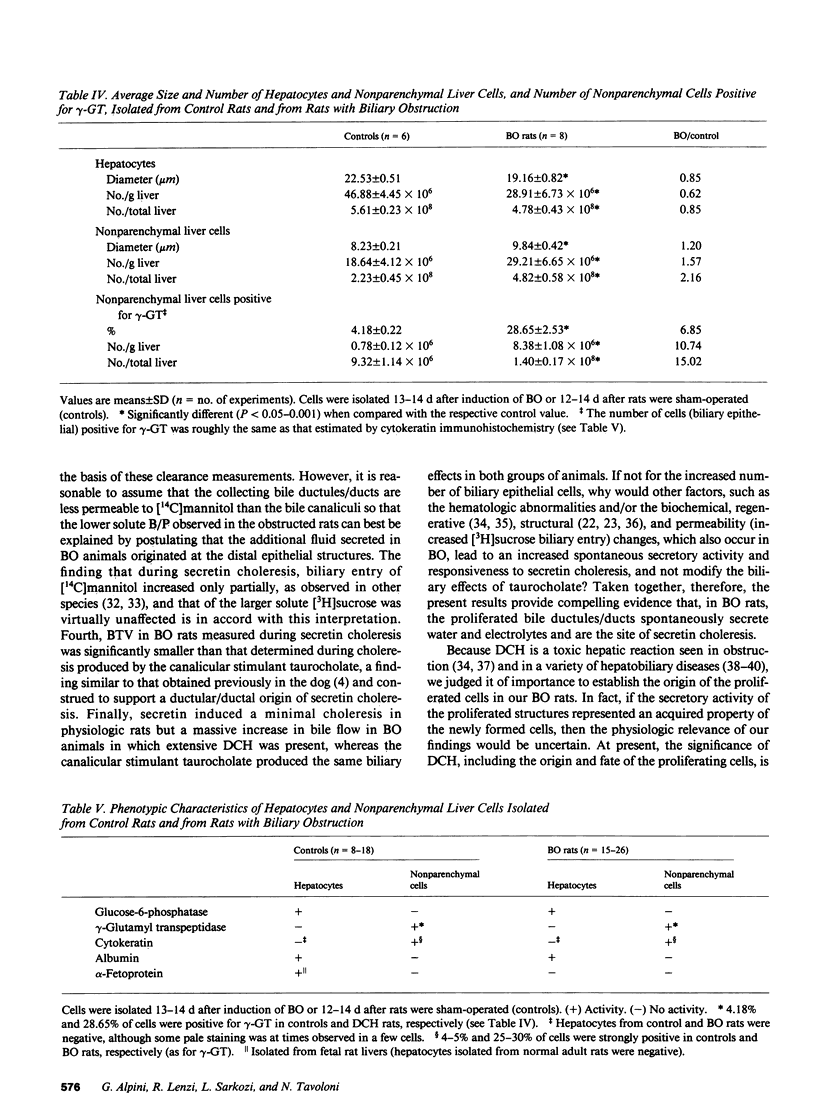
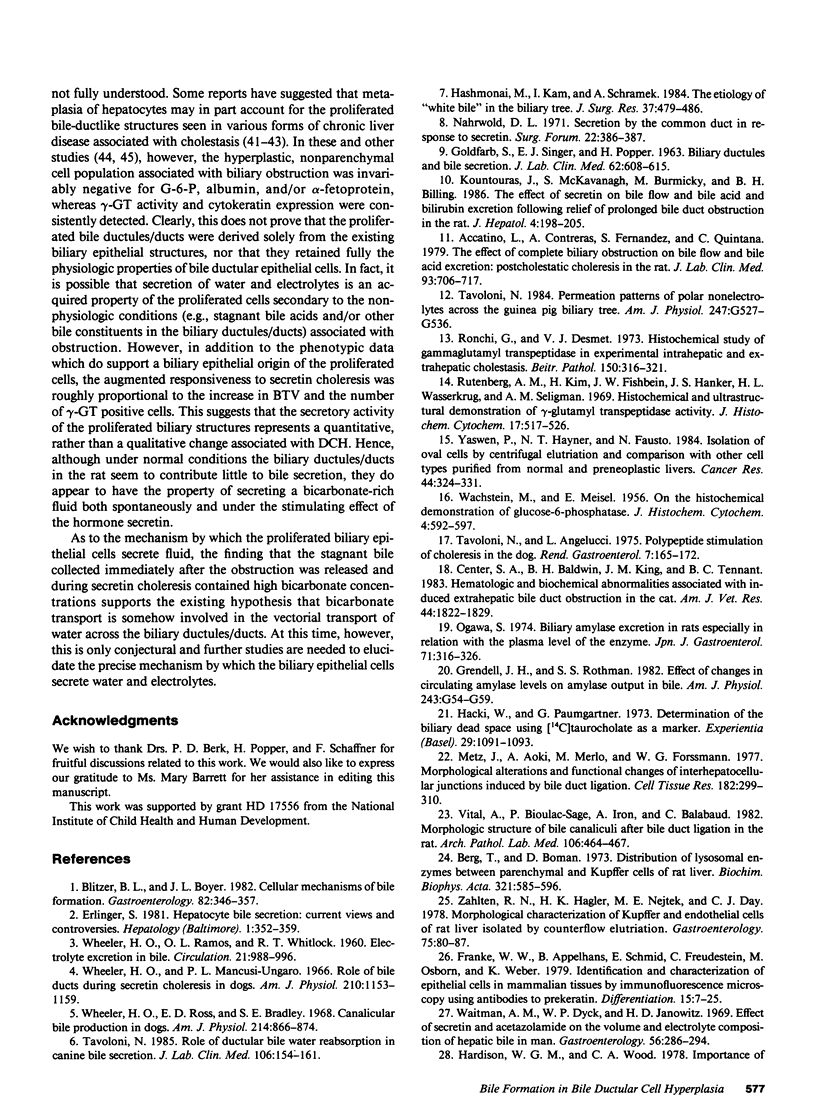
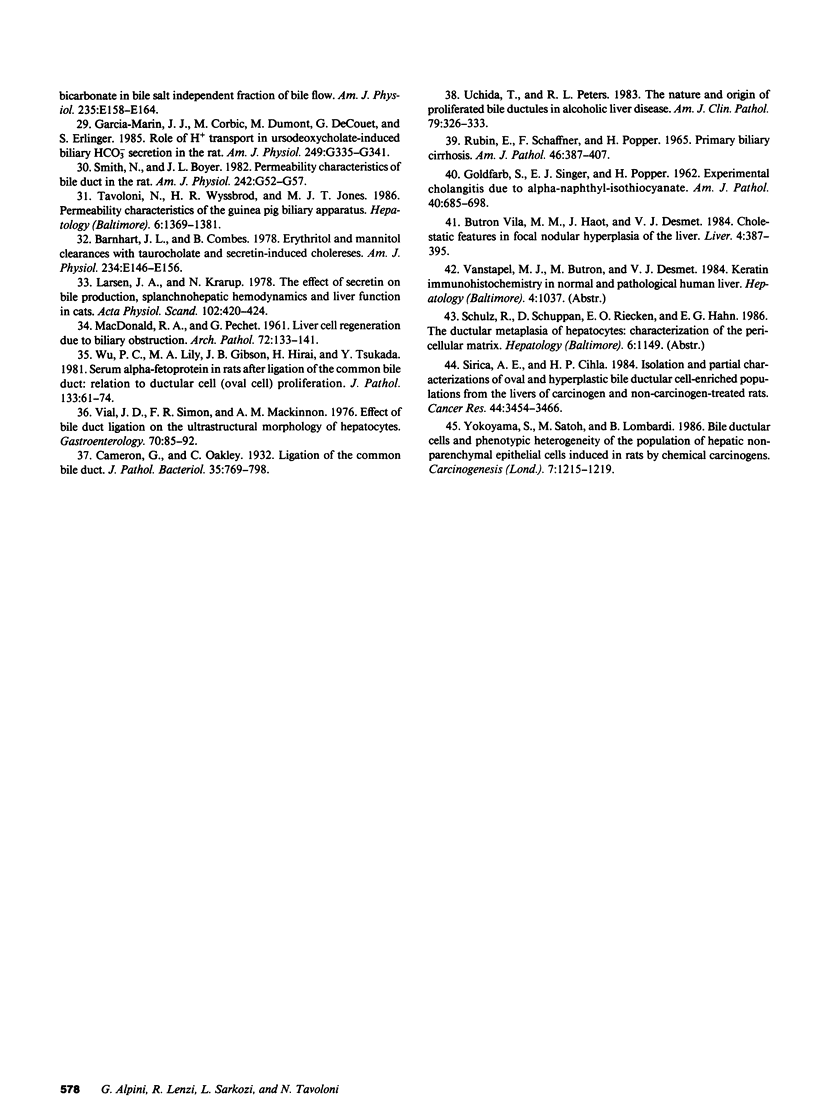
Images in this article
Selected References
These references are in PubMed. This may not be the complete list of references from this article.
- Accatino L., Contreras A., Fernańdez S., Quintana C. The effect of complete biliary obstruction on bile flow and bile acid excretion: postcholestatic choleresis in the rat. J Lab Clin Med. 1979 May;93(5):706–717. [PubMed] [Google Scholar]
- Barnhart J. L., Combes B. Erythritol and mannitol clearances with taurocholate and secretin-induced cholereses. Am J Physiol. 1978 Feb;234(2):E146–E156. doi: 10.1152/ajpendo.1978.234.2.E146. [DOI] [PubMed] [Google Scholar]
- Berg T., Boman D. Distribution of lysosomal enzymes between parenchymal and Kupffer cells of rat liver. Biochim Biophys Acta. 1973 Oct 10;321(2):585–596. doi: 10.1016/0005-2744(73)90201-5. [DOI] [PubMed] [Google Scholar]
- Blitzer B. L., Boyer J. L. Cellular mechanisms of bile formation. Gastroenterology. 1982 Feb;82(2):346–357. [PubMed] [Google Scholar]
- Butron Vila M. M., Haot J., Desmet V. J. Cholestatic features in focal nodular hyperplasia of the liver. Liver. 1984 Dec;4(6):387–395. doi: 10.1111/j.1600-0676.1984.tb00955.x. [DOI] [PubMed] [Google Scholar]
- Center S. A., Baldwin B. H., King J. M., Tennant B. C. Hematologic and biochemical abnormalities associated with induced extrahepatic bile duct obstruction in the cat. Am J Vet Res. 1983 Oct;44(10):1822–1829. [PubMed] [Google Scholar]
- Erlinger S. Hepatocyte bile secretion: current views and controversies. Hepatology. 1981 Jul-Aug;1(4):352–359. doi: 10.1002/hep.1840010413. [DOI] [PubMed] [Google Scholar]
- Franke W. W., Appelhans B., Schmid E., Freudenstein C., Osborn M., Weber K. Identification and characterization of epithelial cells in mammalian tissues by immunofluorescence microscopy using antibodies to prekeratin. Differentiation. 1979;15(1):7–25. doi: 10.1111/j.1432-0436.1979.tb01030.x. [DOI] [PubMed] [Google Scholar]
- GOLDFARB S., SINGER E. J., POPPER H. BILIARY DUCTULES AND BILE SECRETION. J Lab Clin Med. 1963 Oct;62:608–615. [PubMed] [Google Scholar]
- GOLDFARB S., SINGER E. J., POPPER H. Experimental cholangitis due to alpha-naphthyl-isothiocyanate (ANIT). Am J Pathol. 1962 Jun;40:685–698. [PMC free article] [PubMed] [Google Scholar]
- Garcia-Marin J. J., Corbic M., Dumont M., de Couët G., Erlinger S. Role of H+ transport in ursodeoxycholate-induced biliary HCO-3 secretion in the rat. Am J Physiol. 1985 Sep;249(3 Pt 1):G335–G341. doi: 10.1152/ajpgi.1985.249.3.G335. [DOI] [PubMed] [Google Scholar]
- Grendell J. H., Rothman S. S. Effect of changes in circulating amylase levels on amylase output in bile. Am J Physiol. 1982 Jul;243(1):G54–G59. doi: 10.1152/ajpgi.1982.243.1.G54. [DOI] [PubMed] [Google Scholar]
- Hardison W. G., Wood C. A. Importance of bicarbonate in bile salt independent fraction of bile flow. Am J Physiol. 1978 Aug;235(2):E158–E164. doi: 10.1152/ajpendo.1978.235.2.E158. [DOI] [PubMed] [Google Scholar]
- Hashmonai M., Kam I., Schramek A. The etiology of "white bile" in the biliary tree. J Surg Res. 1984 Dec;37(6):479–486. doi: 10.1016/0022-4804(84)90217-8. [DOI] [PubMed] [Google Scholar]
- Häcki W., Paumgartner G. Determination of the biliary dead space using 14C-taurocholate as a marker. Experientia. 1973 Sep 15;29(9):1091–1093. doi: 10.1007/BF01946737. [DOI] [PubMed] [Google Scholar]
- Kountouras J., McKavanagh S., Burmicky M., Billing B. H. The effect of secretin on bile flow and bile acid and bilirubin excretion following relief of prolonged bile duct obstruction in the rat. J Hepatol. 1987 Apr;4(2):198–205. doi: 10.1016/s0168-8278(87)80080-6. [DOI] [PubMed] [Google Scholar]
- Larsen J. A., Krarup N. The effect of secretin on bile production, splanchnohepatic hemodynamics and liver function in cats. Acta Physiol Scand. 1978 Apr;102(4):420–424. doi: 10.1111/j.1748-1716.1978.tb06089.x. [DOI] [PubMed] [Google Scholar]
- Metz J., Aoki A., Merlo M., Forssmann W. G. Morphological alterations and functional changes of interhepatocellular junctions induced by bile duct ligation. Cell Tissue Res. 1977 Aug 26;182(3):299–310. doi: 10.1007/BF00219766. [DOI] [PubMed] [Google Scholar]
- Nahrwold D. L. Secretion by the common duct in response to secretin. Surg Forum. 1971;22:386–387. [PubMed] [Google Scholar]
- RUBIN E., SCHAFFNER F., POPPER H. PRIMARY BILIARY CIRRHOSIS. CHRONIC NON-SUPPURATIVE DESTRUCTIVE CHOLANGITIS. Am J Pathol. 1965 Mar;46:387–407. [PMC free article] [PubMed] [Google Scholar]
- Ronchi G., Desmet V. J. Histochemical study of gamma glutamyl transpeptidase (GGT) in experimental intrahepatic and extrahepatic cholestasis. Beitr Pathol. 1973 Dec;150(3):316–321. doi: 10.1016/s0005-8165(73)80061-7. [DOI] [PubMed] [Google Scholar]
- Rutenburg A. M., Kim H., Fischbein J. W., Hanker J. S., Wasserkrug H. L., Seligman A. M. Histochemical and ultrastructural demonstration of gamma-glutamyl transpeptidase activity. J Histochem Cytochem. 1969 Aug;17(8):517–526. doi: 10.1177/17.8.517. [DOI] [PubMed] [Google Scholar]
- Sirica A. E., Cihla H. P. Isolation and partial characterizations of oval and hyperplastic bile ductular cell-enriched populations from the livers of carcinogen and noncarcinogen-treated rats. Cancer Res. 1984 Aug;44(8):3454–3466. [PubMed] [Google Scholar]
- Smith N. D., Boyer J. L. Permeability characteristics of bile duct in the rat. Am J Physiol. 1982 Jan;242(1):G52–G57. doi: 10.1152/ajpgi.1982.242.1.G52. [DOI] [PubMed] [Google Scholar]
- Tavoloni N. Permeation patterns of polar nonelectrolytes across the guinea pig biliary tree. Am J Physiol. 1984 Nov;247(5 Pt 1):G527–G536. doi: 10.1152/ajpgi.1984.247.5.G527. [DOI] [PubMed] [Google Scholar]
- Tavoloni N. Role of ductular bile water reabsorption in canine bile secretion. J Lab Clin Med. 1985 Aug;106(2):154–161. [PubMed] [Google Scholar]
- Tavoloni N., Wyssbrod H. R., Jones M. J. Permeability characteristics of the guinea pig biliary apparatus. Hepatology. 1986 Nov-Dec;6(6):1369–1381. doi: 10.1002/hep.1840060625. [DOI] [PubMed] [Google Scholar]
- Uchida T., Peters R. L. The nature and origin of proliferated bile ductules in alcoholic liver disease. Am J Clin Pathol. 1983 Mar;79(3):326–333. doi: 10.1093/ajcp/79.3.326. [DOI] [PubMed] [Google Scholar]
- Vial J. D., Simon F. R., Mackinnon A. M. Effect of bile duct ligation on the ultrastructural morphology of hepatocytes. Gastroenterology. 1976 Jan;70(1):85–92. [PubMed] [Google Scholar]
- Vital A., Bioulac-Sage P., Iron A., Balabaud C. Morphologic structure of bile canaliculi after bile duct ligation in the rat. A time-course study. Arch Pathol Lab Med. 1982 Sep;106(9):464–467. [PubMed] [Google Scholar]
- WHEELER H. O., RAMOS O. L., WHITLOCK R. T. Electrolyte excretion in bile. Circulation. 1960 May;21:988–996. doi: 10.1161/01.cir.21.5.988. [DOI] [PubMed] [Google Scholar]
- Waitman A. M., Dyck W. P., Janowitz H. D. Effect of secretin and acetazolamide on the volume and electrolyte composition of hepatic bile in man. Gastroenterology. 1969 Feb;56(2):286–294. [PubMed] [Google Scholar]
- Wheeler H. O., Mancusi-Ungaro P. L. Role of bile ducts during secretin choleresis in dogs. Am J Physiol. 1966 May;210(5):1153–1159. doi: 10.1152/ajplegacy.1966.210.5.1153. [DOI] [PubMed] [Google Scholar]
- Wheeler H. O., Ross E. D., Bradley S. E. Canalicular bile production in dogs. Am J Physiol. 1968 Apr;214(4):866–874. doi: 10.1152/ajplegacy.1968.214.4.866. [DOI] [PubMed] [Google Scholar]
- Wu P. C., Ma L., Gibson J. B., Hirai H., Tsukada Y. Serum alpha-fetoprotein in rats after ligation of the common bile duct: relation to ductular cell (oval cell) proliferation. J Pathol. 1981 Jan;133(1):61–74. doi: 10.1002/path.1711330107. [DOI] [PubMed] [Google Scholar]
- Yaswen P., Hayner N. T., Fausto N. Isolation of oval cells by centrifugal elutriation and comparison with other cell types purified from normal and preneoplastic livers. Cancer Res. 1984 Jan;44(1):324–331. [PubMed] [Google Scholar]
- Yokoyama S., Satoh M., Lombardi B. Bile ductular cells and the phenotypic heterogeneity of the population of hepatic non-parenchymal epithelial cells induced in rats by chemical carcinogens. Carcinogenesis. 1986 Jul;7(7):1215–1219. doi: 10.1093/carcin/7.7.1215. [DOI] [PubMed] [Google Scholar]
- Zahlten R. N., Hagler H. K., Nejtek M. E., Day C. J. Morphological characterization of Kupffer and endothelial cells of rat liver isolated by counterflow elutriation. Gastroenterology. 1978 Jul;75(1):80–87. [PubMed] [Google Scholar]




